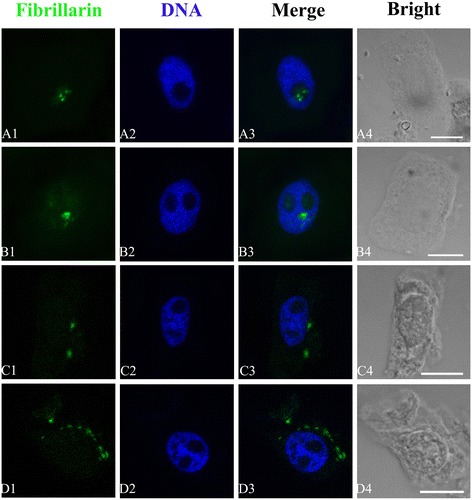Figure 10.

Effects of different concentrations of Al on the translocation of fibrillarin. Simultaneous location of fibrillarin after the reaction with primary anti-fibrillarin antibody and secondary antibody conjugated with FITC (green) and DNA after the reaction with DAPI (blue) in the same single optical section obtained with the confocal scanning laser microscopy. A1–D1, Fibrillarin detection; A2–D2, DNA detection; A3–D3, Merged image; A4–D4, Bright-field image; A1–A3, Showing that fibrillarin was localized in nucleolus in control cells. B1–B3, Showing that fibrillarin was transferred from nucleolus to nucleoplasm in the cells treated with 10−4 M Al for 72 h. C1–C3, Showing that fibrillarin was on the way from nucleus to cytoplasm in the cells treated with 10−2 M Al for 72 h. D1–D3, Showing that larger amount of fluorescence signals of fibrillarin appeared and was transferred from nucleolus to cytoplasm in the cells exposed to 10−2 M Al for 72 h. These signals were close to nucleus and accumulated around the nucleus in varying degrees. Scale bar =10 μm.
